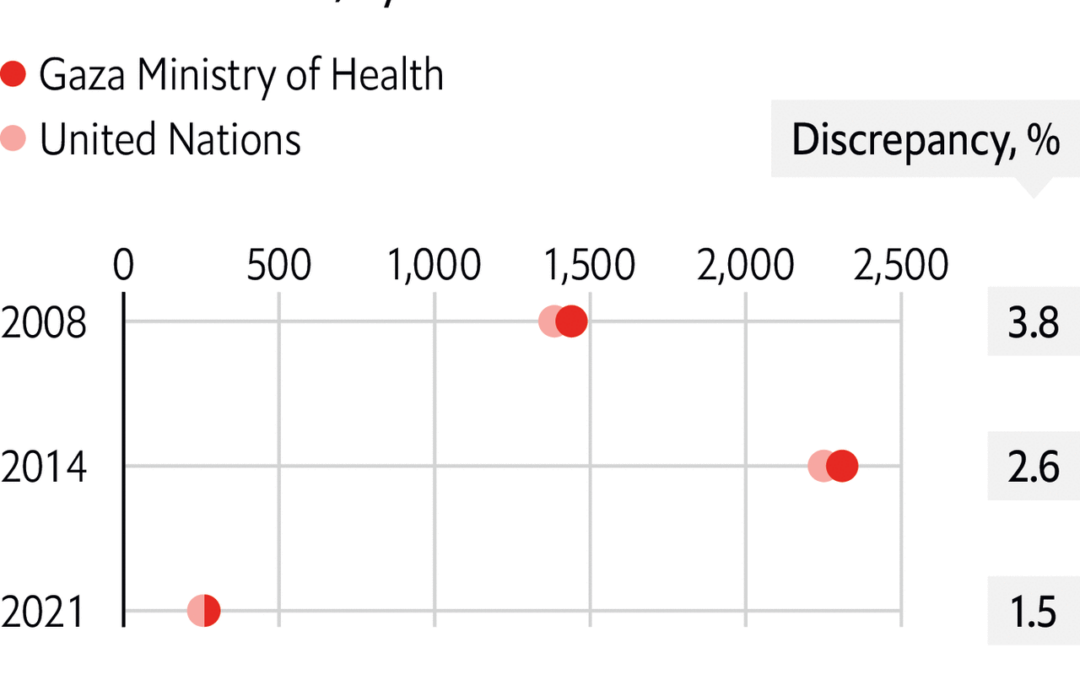Joe Biden doubts figures issued by Gazan officials. International agencies say they are mostly accurate
Your browser does not support this video.
Doubters cite a number of reasons for scepticism. One is that Gaza’s most senior health official is appointed by Hamas, which seized control of the enclave from its rival, Fatah, after a brief conflict in 2007. A White House spokesman, following up on Mr Biden’s comments, described the ministry as “just a front for Hamas”. During this conflict the United Nations, which usually provides its own regular assessment of casualties, has relied on the health ministry’s figures, because the intensity of the fighting has impeded its own data collection.
Yet there are good reasons to trust the casualty figures coming out of Gaza. One is that the health ministry’s figures from previous conflicts have been reliable, according to the UN and human-rights organisations, which have scrutinised them, and come up with their own estimates. “When we, and the UN, have done our own verification in the past, numbers have generally been consistent,” says Omar Shakir of Human Rights Watch. America’s State Department was using Gazan health-ministry data only a few hours before Mr Biden said he did not trust the figures. There is no evidence that the ministry has changed its methodology. A spokesperson for the UN said they would “continue to include [the Gaza health ministry’s] data in our reporting” as it is “clearly sourced”.
Cumulative deaths reported by each side*
To Sunday October 29th
-
Palestinian†, reported by Gaza
Ministry of Health -
Israeli, reported by Israel
October
On October 26th, after Mr Biden questioned the Gaza death toll, the health ministry released a list of 7,028 people who had been killed since October 7th, including 2,913 children. This list counts the bodies that arrive at Gaza’s hospitals, recording their names, official ID numbers, age and sex. The health ministry says it enters these data into a computerised “hospital information system”, which is transferred daily to a “central martyrs’ registry database” and published in periodic data releases from the ministry. The database does not record whether the victims were militants or civilians. Its numbers do not include people who may lie under rubble or those who were buried by their families and not brought to hospitals. Nor do they include deaths from lack of access to hospital care or from stress caused by the fighting. So they probably underestimate the death toll. The identities of those named in the report can be verified: Israel controls the Palestinian population register, and has detailed information on every Palestinian living in Gaza.









